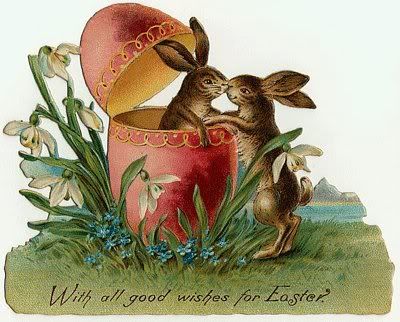.jpg)
"April is the cruellest month, breedingsays the famous line from the Waste Land.
lilacs out of the dead land"
Lilac has always stood for me as the very emblem of April, "stirring dull roots with spring rain". So inextricably has the month been linked to the bloom's Greek name. Πασχαλια/Paschalia (Pa-scha-leeA) means "Easter blossom" simply because lilacs bloom exactly around the time of Orthodox Easter in April. But like the festivities and the spring rain, alas they last all too briefly. The much needed rain is a brief occurrence in our warmer climate.
The hunt for a realistic soliflore that replicates the lush character of this elusive bloom has occupied me for years, ever since I was a child, buying little oils at herbalist shops with my pocket money after school.
Lilac's odour profile is unique in that it incorporates the clean and the dirty rolled into one and is romantic as well as sexualised. When one buries one's face into the large panicles, the smell of intimacy, like worn musky undergarments by a lover scintillates, mingled with the honeyed pollen and the translucent dewiness of soft petals; conspiring into a spring plot to ensnare you into surrendering all thought and yield to its fragrant message to howl "the eternal yes".
And yet perfumers have never been able to extract a good and abundant enough essence for use in perfumery, therefore the combination of other natural oils and synthetics such as Apo patchone, Lindenol, Nerol 800/900, Terpineol Extra, Dimethyl Benzyl Carbinol to replicate the scent of the living flower are used. Too often the final product turns out to smell like tin foil and unappealing to anyone who has had the good fortune to have had cut branches of the real thing adorning their homes at spring, emitting their heavenly aroma beneath gauzy curtains gushing in the wind.
Syringa (Lilac) is a genus of 20–25 species of flowering plants in the olive family (Oleaceae) which are usually a light purple (commonly referred to as lilac or lilas in French) or less often light pink or white. Native to Europe and Asia, it is said that Syringa Persica has been brought to Europe at the end of the 16th century, from the Ottoman gardens, while Syringa Vulgaris grew in the Balkans. The Holy Roman Emperor's ambassador, Ogier Ghiselin de Busbecq, is credited with supplying lilac slips to Carolus Clusius, in 1562. Botanists of fame, like the herbalist John Gerard, soon had the rarity in their gardens: he notes lilacs growing “in very great plenty” in 1597. In the American colonies lilacs were introduced in the 18th century.
It is also interesting to note that purple lilacs symbolise first love and white lilacs youthful innocence (see Language of flowers).
In Ineke's After my Own Heart, I found a satisfying lilac interpretation that is innocent, yet not without the throes of first love vibrating its delicate heart strings. Described as "the scent of fresh lilacs floating on the early breeze" it fulfils its promise of a fresh perfume with a romantic inclination. The fragrance opens on a lightly powdery burst of greenery with a slightly bitter background of chilliness, like the rush of wind on a cool evening, bringing up goosebumps on warm skin. Almost instantaneously, however, a warm sweetness like that of pollen is surfacing to mollify and caress, with the delicate touch of a dot of marzipan paste on a plate of berries drizzled with a touch of Alsatian Riesling not short of its goût petrol. The composition is modern, with a more or less linear presence on the skin, meaning there is no distinct development, sustaining the impression of flower and dusty air for a good while.
To compare After my Own Heart with another modern approach on a lilac soliflore, F.Malle's En Passant, by nose Olivia Giacobetti, I would venture to say that the latter is pronouncedly more limpid and aqueous, with a slightly sour note, like sniffing fresh yeasty bread dough. Although both go for the fresh approach they divert ways very soon, as Ineke's rendition is a little dustier and sweeter and probably less dependent on particular skin chemistry. They resemble watercolours for which the artist thought of light green tones and white opalescence of a cool, bracing morning (for En Passant) and of the pinky blue skies of afternoon warmth (for After my Own Heart).
Guerlain's Angelique Lilas in the Aqua Allegoria line is another interpretation, this time with the watery theme veering into the bitter terrain of rained upon angelicas, but the pronounced Calone element in it might seem harsher than Ineke's approach.
Contemplating whether my personal lilac-strewn Eldorado has been reached, I find that like the mythical town it is best to dream and find elements of it in the fragrances on offer. Perhaps the search will never end until technology and analytical chemistry sufficiently unravel the thread of Ariadne. Until then, real stems of lilac in a vase along with pleasant fragrances that echo its sweet message such as After my Own Heart will keep me company.
Notes: bergamot, raspberry, green foliage, lilac, sandalwood, heliotrope and musk.
Info on how to obtain the fragrance and samples at Ineke.com
You can read an appreciation of the whole line from A to E clicking this Ineke article.
Les Atelies du Parfum has posted a lovely lilac poem for those of you who read French.

Pic originally uploaded by princesshaiku.
.jpg)


.bmp)
.jpg)





